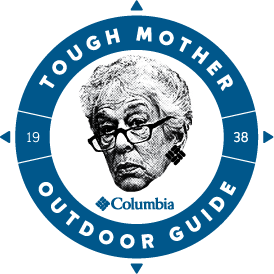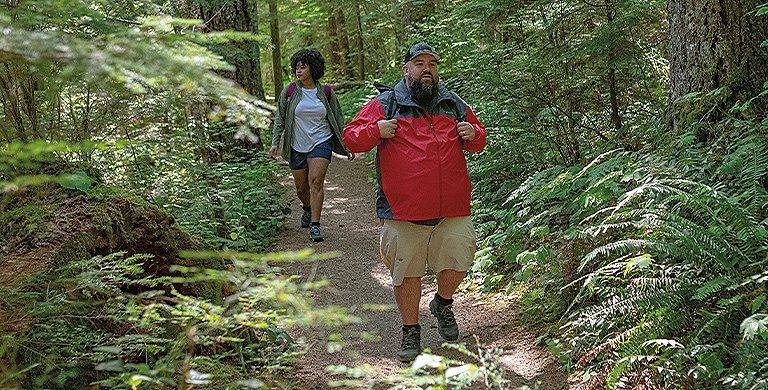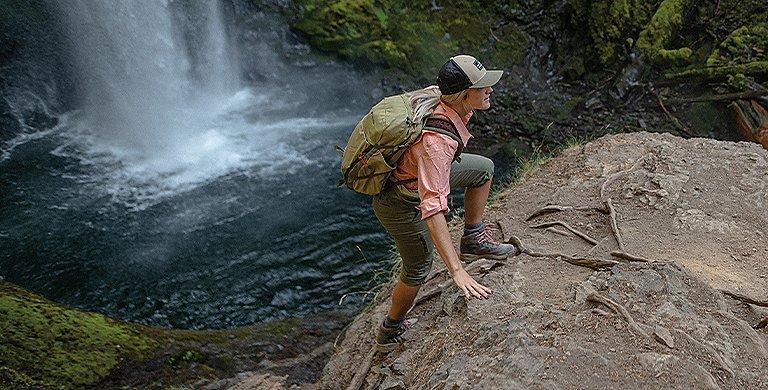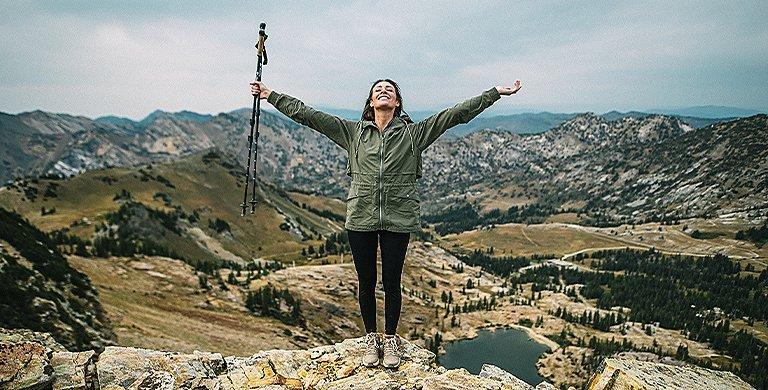HIKING
How to Plan Your First Solo Hike
Discover the joys of hiking alone with these tips for solo adventurers
BY DAVID YOUNG
Hiking alone is a special experience—you can soak up the spectacular views and spend time communing with nature without the distractions of other people. Many outdoor lovers find it meditative and even therapeutic to experience quality one-on-one time with Mother Nature.
Solo hiking is a fantastic way to explore nature at your own pace, but if you’ve never tried hiking alone, venturing off on a trail by yourself may seem intimidating. Knowing how to pack and what to bring, not to mention being aware of what you may encounter once you’re out there, can be a lot to learn. So we've put together some tips to help you plan your solo adventure.
Solo hiking is a fantastic way to explore nature at your own pace, but if you’ve never tried hiking alone, venturing off on a trail by yourself may seem intimidating. Knowing how to pack and what to bring, not to mention being aware of what you may encounter once you’re out there, can be a lot to learn. So we've put together some tips to help you plan your solo adventure.
What are the benefits of hiking alone?
First of all, when you’re spending time outside by yourself, you get to enjoy the scenery on your terms. Rather than waiting on slower members of your hiking party, or struggling to keep up with the folks ahead, you can go as fast or slow as you like. Stop to appreciate the views at your leisure or move faster to get a better workout.
Solo hiking trips are also relaxing and restorative. When it’s just you alone on a trail in a natural environment, you’re able to escape everyday stresses. What’s more, it’s a great way to challenge yourself and get outside your comfort zone, especially if you engage in more adventurous solo hiking experiences such as solo backpacking or hiking alone at night. These activities will build your confidence and mental strength. Just be sure to start slowly and work up to more-advanced excursions.
Solo hiking trips are also relaxing and restorative. When it’s just you alone on a trail in a natural environment, you’re able to escape everyday stresses. What’s more, it’s a great way to challenge yourself and get outside your comfort zone, especially if you engage in more adventurous solo hiking experiences such as solo backpacking or hiking alone at night. These activities will build your confidence and mental strength. Just be sure to start slowly and work up to more-advanced excursions.
What do I need for solo hiking?
As with all hiking, being prepared is essential, but it’s even more important for solo hiking. Having the right clothing, shoes, and equipment will help to ensure you can handle whatever you might encounter in the wild. For day-hiking trips, these solo hiking essentials are must-haves:
- Backpack
- Water Bottle
- First-aid kit
- Headlamp or flashlight
- Food/snacks
- Hiking socks
- Hiking hat
- Hiking jacket
- Hiking shirt
- Hiking boots
- Hiking pants or shorts
- Map/GPS device
- Our 10 essentials for backcountry hiking
- OPTIONAL: Trekking poles
What should I do before hiking alone?
Now that you have an idea of the hiking clothes and gear you'll need, there is some basic preparation for hiking alone to ensure a successful adventure.
In addition to having the right tools, you need to know how to use them. Consider taking a wilderness first aid course, and learn how to use a map and compass. Know your limits and fitness level. You need to be in shape and know your body well enough to determine when to rest or turn back.
Do your homework in advance by plotting out your course on a map. Make sure you’re familiar with the area, and check the local forecast so you can dress accordingly. Whether you’re doing a 2-mile solo hike or a 20-mile solo backpacking trip, be sure to tell others where you are going.
Finally, make certain your vehicle has enough fuel to get you there and back. If the road to the trailhead is rough, be sure your vehicle is built for difficult terrain and provides proper clearance. And it’s always a good idea to stock your vehicle with food, water, and blankets for any potential emergency.
In addition to having the right tools, you need to know how to use them. Consider taking a wilderness first aid course, and learn how to use a map and compass. Know your limits and fitness level. You need to be in shape and know your body well enough to determine when to rest or turn back.
Do your homework in advance by plotting out your course on a map. Make sure you’re familiar with the area, and check the local forecast so you can dress accordingly. Whether you’re doing a 2-mile solo hike or a 20-mile solo backpacking trip, be sure to tell others where you are going.
Finally, make certain your vehicle has enough fuel to get you there and back. If the road to the trailhead is rough, be sure your vehicle is built for difficult terrain and provides proper clearance. And it’s always a good idea to stock your vehicle with food, water, and blankets for any potential emergency.
Tips for the hiking trail
Remember that day hiking alone is supposed to be a fun experience. So engage with the trail and the trip at your leisure. You choose the pace and don’t push it unless you want to.
Make sure to stop and enjoy the sights and sounds. Familiarize yourself with the Leave No Trace principles of hiking to follow wilderness ethics. Double- and triple-check that all of your gear is in working order and that your hiking boots are broken in before you head out.
Hiking solo does not mean you won’t see and engage with other people on the trail. So consider starting with popular trails where people are often willing to lend a helping hand if needed. Once you have a few solo hikes under your belt, you can level up to a more remote or longer solo hike or even a multiday journey.
So grab that pack, lace up your boots, and hit the trail solo. It may be one of the most liberating ways to engage with nature while learning more about yourself and your resilience.
Make sure to stop and enjoy the sights and sounds. Familiarize yourself with the Leave No Trace principles of hiking to follow wilderness ethics. Double- and triple-check that all of your gear is in working order and that your hiking boots are broken in before you head out.
Hiking solo does not mean you won’t see and engage with other people on the trail. So consider starting with popular trails where people are often willing to lend a helping hand if needed. Once you have a few solo hikes under your belt, you can level up to a more remote or longer solo hike or even a multiday journey.
So grab that pack, lace up your boots, and hit the trail solo. It may be one of the most liberating ways to engage with nature while learning more about yourself and your resilience.
Ready to shop for your adventure? Check out our best hiking gear.
10 ESSENTIALS OF THE BACKCOUNTRY
Any time you explore nature, it’s a good idea to carry these 10 essentials. You might not have to use them, but you’ll be glad they’re on hand if you need them.
- Food and nutrition – Have enough food for your planned excursion, but also pack extra should you be out longer than expected.
- Water – Use a water bottle or hydration pack and bring a water filtration system. In winter, have a way to boil snow into drinkable water.
- Headlamp/illumination – Bring a good headlamp or flashlight and double-check that the batteries are working before you head out.
- Fire starters – Keep fire starters such as matches, a lighter, and tinder in a dry place in your pack.
- Knife/repair kit – Bring a sharp knife or multi-tool.
- Sun protection – Wear sunglasses, sunscreen, or clothes with sun protection . (Recent studies show that UV-protective clothing can work even better than sunscreen.)
- First aid – Bring a kit with the standard essentials you’ll need for any emergency. Be sure to bring any medications you may need and stock extra if possible.
- Insulation/extra clothes – Carry an extra set of warm clothes, including a puffer jacket and fleece midlayers, for additional insulation or in case you get wet. Opt for extra-warm technologies like Omni-Heat Infinity and Omni-Heat Helix .
- Shelter – Bring a quality tent and make sure it is with you at all times—this will be especially important if you have to find shelter in a snowstorm.
- Navigation – Before heading out, be sure you have proper navigation skills and tools and know how to use them.



